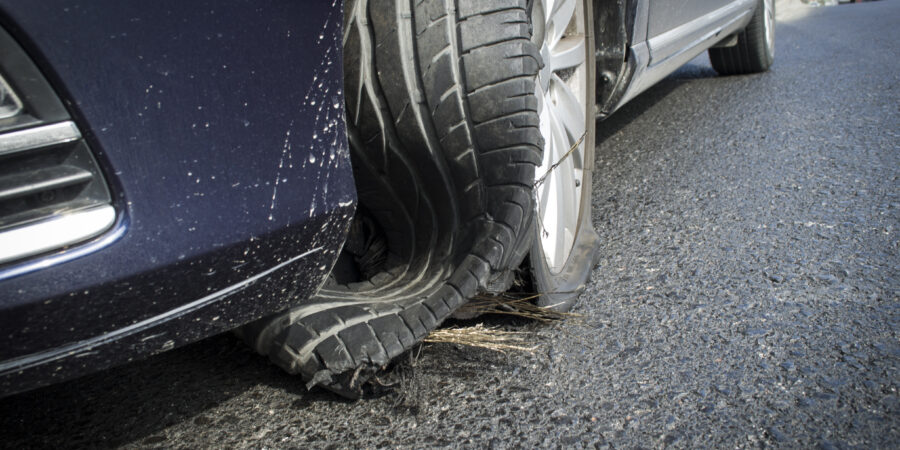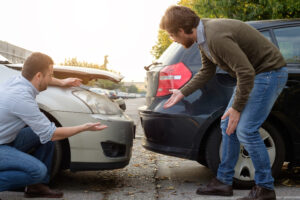Who is At Fault for Tire Blowouts?
As you drive down the highway, you will undoubtedly see many signs of previous tire blowouts. A blowout is unfortunately a common occurrence that can impact the driver’s ability to control the vehicle. At the same time, it poses a risk for other drivers who are nearby. Generally, those who are responsible for an auto accident may be held liable for the incident under the law. This means that they or their insurer may need to pay for related auto repairs, medical expenses and more for the accident they caused.
However, a tire blowout is seemingly a special circumstance. If you have been involved in an accident caused by a blowout, you may be wondering who is liable for the accident. A closer look may open your eyes to the legal recourse available to you.
Causes of Tire Blowouts
A blowout is commonly caused by poor maintenance. For example, the vehicle’s driver may have over inflated or under inflate the tires. Improper air pressure can impact the performance of the tires. The tires may have weak walls or low tread. When tires reach the end of their useful life, the pressure exerted on them may be sufficient to cause a rupture. Each driver is responsible for ensuring that their tires are properly inflated and are in good condition before they drive. Failing to do so may make the driver negligent and liable for a related truck or car accident.
There are other causes of a blowout. For example, hazardous conditions on the road may have contributed to the issue. The government may be responsible for maintaining safe driving conditions on local roads. A major pothole or another issue with road maintenance may be to blame. In some cases, the tire itself is faulty. Manufacturing defects with quality tires are rare, but they can and do happen. If the tires have been well-maintained, if they are relatively new and if the road surface is not a concern, a manufacturing defect may be considered as a possible cause.
The Dangers of a Blowout
The National Highway Traffic Safety Administration reported almost 79,000 truck and car accidents in 2003 that were related to blowouts or flat tires. From these accidents, there were more than 10,000 non-fatal injuries and 414 fatalities. According to the National Motor Vehicle Crash Causation Survey, there were almost 5,470 accidents related to tires between 2005 and 2007. The difference between these surveys may be rooted in the fact that tire pressure monitoring systems were not installed in vehicles in 2003. Keep in mind that some of these tire-related crashes involved a single vehicle, and others were multi-vehicle collisions.
A blowout occurs suddenly. Without notice, the driver may lose control of the vehicle. This can result in skidding or veering which leads the vehicle into a precarious situation. In addition to potentially running into another car or truck on the road, the vehicle may hit a tree, a street sign or other obstacles. This can result in serious personal injury or death. It can also result in vehicle damage and property damage.
Quick thinking and a fast response are essential for the best outcome if you experience a blowout. Rather than slamming on the brakes, allow the vehicle to naturally decelerate by taking your foot off of the gas pedal. At the same time, you should hold the steering wheel tightly so that you do not lose control. While the vehicle is slowing down, steer it to a safe place to park. Ideally, this will be on the side of the road. Once the vehicle has safely stopped, turn your hazard lights on before you step out of the vehicle.
Insurance Coverage for Tire Blowouts
There are two primary types of auto insurance, and these are liability insurance and comprehensive insurance. If you are driving a vehicle that experiences a blowout, you may be liable for the event. In this case, your liability coverage may cover the expenses for the injured party. For example, your coverage may pay for that vehicle’s repairs. It may cover the medical bills for those who were injured in the event. However, it will not cover your own costs for medical bills, vehicle repairs and more.
Comprehensive insurance, on the other hand, covers your expenses related to the accident. Generally, you will be responsible for paying your deductible. Then, your policy will cover the remaining expenses up to the limits of your coverage. Because you have to pay your deductible first, most drivers will not benefit from filing a claim specifically for a blown tire. To make the claim worthwhile and effective, other damage to the vehicle should have occurred as well.
In some cases, however, an insurer may deny a claim if the driver was negligent with the care of the tires. For example, if the tires were very old with minimal tread remaining, you may not be able to successfully file a claim. All drivers should routinely inspect their tires’ trade and air pressure. Tires should be rotated regularly, and they should be replaced once the tread is wearing thin.
Determining Who Is at Fault
Whether you were driving the vehicle that had a blowout or you were the victim of an auto accident involving the blowout, it is important to determine who is at fault. Initially, you should consider the condition of the tires to determine if the driver was at fault. All drivers are responsible for confirming the condition of their tires each time before they set off down the road.
In some cases, truck drivers for major delivery companies or suppliers are to blame. These truck drivers also assume responsibility for checking the condition of their tires. However, there may be instances when a truck driver’s employer may be to blame. For example, these companies are responsible for the maintenance of their vehicles. If the maintenance is outsourced to a third company, that third party may be fully or partially negligent.
Even tires that are in great condition may have a blowout if road conditions are hazardous. Potholes, dips and other road issues should be properly marked so that drivers have time to avoid them. Poor road maintenance and improper signage can make the government liable for the incident. The blowout generally should have occurred very close to the problem area to show causation.
Defective tires can also lead to blowouts. Generally, these blowouts occur in relatively new tires that are visibly in good condition. A manufacturing defect or even the use of low-grade materials may be to blame. If this is the case, a lawsuit against the tire manufacturer may be filed so that the company can be held liable for the damages.
The Elements of Negligence in an Auto Accident
The driver’s auto coverage may cover the cost of most of the damages, but there are instances when coverage is insufficient or when the insurer denies the claim. Injured parties have the ability to seek full compensation from the negligent party in the car accident through a lawsuit. With the assistance of a personal injury attorney, you can determine if your case meets the four elements of a lawsuit.
The first element is duty of care. Duty of care describes the expected or normal actions that other parties would have taken in a similar situation. The second element is a breach of that duty of care. Essentially, the driver did not take normal and expected steps to avoid the accident. Third, it must be proven that the driver caused the accident through the breach. Finally, the injured party must have suffered damages as a result of the driver’s negligence.
A personal injury lawsuit may only have a positive outcome if all of these elements are met. Your personal injury lawyer will carefully review your case during an initial consultation. Through a consultation, the attorney will determine the strength of your case and will provide you with an expert legal recommendation.
Consult with a Personal Injury Attorney Today
A tire blowout can cause significant damage to vehicles and property. It can also result in serious injuries or even fatalities. If you have been the victim of a blowout or if you were driving a vehicle that had a blowout, it is important to understand your rights. To request a legal consultation with a personal injury attorney at JT Legal Group, contact the office today.



